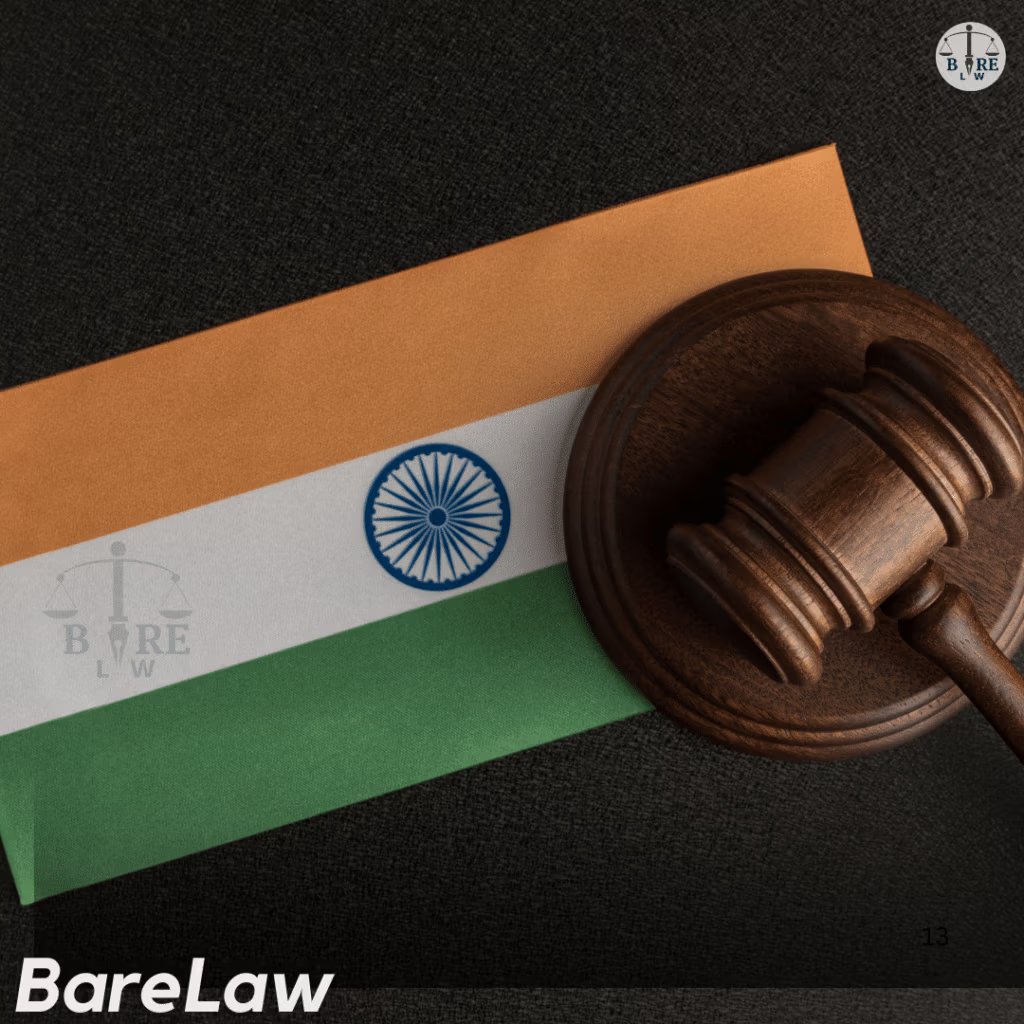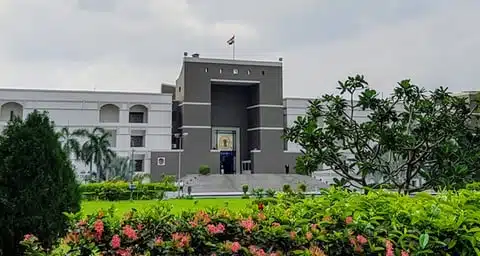India's burgeoning judiciary cannot keep up with that country's burgeoning needs. Reiterating his dire warning about the gap between the judiciary and the other arms of government, the Supreme Court said the shortage was currently at less than 25 judges per million people, rather than the recommended 50 per million.
Table of Contents

Your Case Number Exceeds the Population of Many Countries
Introduction
The judiciary is called the backbone of democracy, which provides justice and equal rights to everyone. But in India, this vital institution is in crisis. It is severely under-resourced; it is one of the largest judicial systems but has the smallest budget. The judiciary is stuck in a bottleneck due to a backlog of more than 40 million cases, a glaring shortage of judges, and inadequate infrastructure. Recently, these issues, among others, sparked the Supreme Court’s light, calling for the Court’s agent reforms but reminding us that under great stress, judges are human, and error is unavoidable. This article tries to understand the key problems facing India’s judiciary and how India can be solved.
The Problems in India’s Judiciary
ShorIndia’s Judges
The most relevant matter is the low judge–to–population ratio. 2002, the Supreme Court targeted 50 judges for a million people within five years. More than two decades later, the rate is less than 25 per million. However, this is inadequate compared with developed countries such as the United States, where there are more than 100 judges per million people. This has led to a judiciary overwhelmed by an increasing number of cases.
Overburdened Judiciary
This leaves the current workforce under massive pressure with fewer judges. Dozens of cases a day come before the judge’s bench, with ljudge’sime for careful consideration or review. This amount of work creates increased chances of errors and puts judges under tremendous mental and emotional strain. However, it becomes increasingly difficult for them to render quality judgments under such conditions.
Delays in Justice Delivery
Millions of litigants in India, too, know the saying — ‘Justice delayed is ju’tice denied.’ Frustrating and financially burdensome, cases often drag on for years and sometimes decades. There are no signs of a reduction in the backlog of cases, which currently stands at more than 40 million. Such delay undermines public confidence in the judiciary and subjects rights and remedies to a court process difficult for many citizens to access.
Public Criticism of Judges
Even if the higher courts are passing adverse remarks against lower court judges for their mistakes in judgment, these criticisms, whose record frequently rests with the judicial orders, can ruin a judge’s reputation and career. At the very least, these sorts of remarks discourage judges from making bold and fair decisions for fear of becoming a public embarrassment and fear of career consequences.
Inadequate Infrastructure
The second crucial issue is the sorry state of the infrastructure of many courts. Basic amenities are lacking, especially in rural and semi-urban areas. Moreover, the lack of modern tools such as e-filing systems, digital case management, and virtual hearing platforms slows the judicial process. This archaic system makes access to the practice of justice even more insufferable.
Proposed Reforms and Solutions
Increasing the Number of Judges
The first and most critical step is to address the shortage of judges. The recruitment process needs to be streamlined and expedited to fill existing vacancies. The number of sanctioned positions should also be increased to meet the target of 50 judges per million people. A larger workforce would help reduce the backlog of cases and distribute the workload more equitably among judges.
ModerniModernizingtructure
There is a need to modernise infrastructure so that it is sufficient. The creation of more courtrooms in underserved areas should have investments. Installing digital tools like e-filing systems, automated case management software, and virtual hearing platforms in these courts will enhance case handling and accessibility. If courts had appropriate facilities, such as adequate seating, lighting, and technology, they would be more user-friendly to litigants and legal professionals.
Supporting Judicial Officers
Judges need adequate support systems to stay well and manage their workload. Stress management workshops, counselling programs, and work-life balance initiatives can help judges manage the personal pressures of their posts. More clerical staff could cope with administrative work so that the judges would only deal with judicial work, thus improving efficiency and decision-making.
Encouraging Alternative Dispute Resolution (ADR)
Encouraging ADR techniques (such as mediation and arbitration) will help resolve many simpler disputes through forums outside the regular court system. Fast-track courts for certain cases, including family disputes and minor criminal offences, would be established to lessen the burden on regular courts. These approaches offer better, faster, less adversarial solutions for litigants and the judiciary.
Promoting Constructive Accountability
To the extent that a higher court makes mistakes while correcting an error of a lower judge, restraint should be exercised. Errors should not call for public criticism but rather through internal mechanisms (allowing judges to explain their decisions privately). Judicial morale can be raised, and constructive, not harsh, remarks can promote fair decisions.
What Can Be Achieved
These reforms can bring about substantial changes in the judiciary. With a larger workforce and better infrastructure, they would resolve cases much faster and significantly reduce the backlog. The use of modern technology would aid courts to become more efficient and accessible, especially in remote areas. To have better performing, more high-quality judgments, we would support judges with programs to manage their stress and adequate resources. The ADR methods and the fast-track courts would ensure that simpler disputes are closed quickly, leaving other regular courts to concentrate on more complicated cases. Constructive accountability would create a fair and confidence-inducing judiciary wherein judges can make independent decisions free from criticism.
Conclusion
Given that India’s judiciary is at a crossrIndia’st stands to be challenged on a large scale with significant potential for courtroom transformation. Of course, the problems of low judge-to-population ratios, inadequate infrastructure, and overburdened courts are daunting, but they are not insurmountable. Yet, with decisive action—more judges appointed, infrastructure modernimodernizedupport provided for judicial officers—the judiciary can deliver on that promise of timely and fair justice. However, acknowledgement from the Supreme Court is crucial – and only a first step.
Justice does not end at pronouncing verdicts; it is about ensuring that justice is fair and accessible and preserves trust. If India properly confronts these issues, it may help create an entirely different kind of judiciary that allows India’s people and the principleIndia’smocracy. The time has come to stop talking about India’s role in acting for the jIndia’sy and the millions looking to it for justice and equality.
Read more
Frequently Asked Questions (FAQs)
1. What is the current judge-to-population ratio in India?
The current judge-to-population ratio in India is less than 25 judges per million people, far below the recommended ratio of 50 judges per million.
2. Why is the low judge-to-population ratio a problem?
The low ratio results in an overwhelming workload for judges, leading to delays in resolving cases, an enormous backlog of over 40 million cases, and increased stress on judicial officers, which can affect the quality of judgments.
3. How does the backlog of cases affect the public?
The backlog causes significant delays in justice delivery, with some cases dragging on for years or even decades. This delay can cause financial and emotional distress to litigants and erode public trust in the judiciary.
4. What challenges do judges face due to the shortage?
Judges are overworked, often handling dozens of cases daily. This workload leads to mental and emotional stress, increases the likelihood of errors in judgments, and affects the overall efficiency of the judicial system.
5. How does public criticism of judges impact the judiciary?
Public criticism, especially in the form of adverse remarks from higher courts, can harm a judge’s reputation and career. It also discourages fair and independent decision-making, as judges may fear public embarrassment or professional repercussions.
6. What role does infrastructure play in the judiciary’s efficiency?
Outdated infrastructure, including a lack of basic amenities and modern technology like e-filing and virtual hearings, slows down court proceedings and makes justice inaccessible, especially in rural and semi-urban areas.
7. What reforms can address these challenges?
Key reforms include increasing the number of judges to meet the recommended ratio, modernizing court infrastructure with digital tools, providing support systems for judges such as stress management programs and administrative assistance, encouraging alternative dispute resolution (ADR) mechanisms like mediation and arbitration, and exercising restraint in public criticism of judges by higher courts.
8. How can alternative dispute resolution (ADR) help?
ADR methods like mediation and arbitration can resolve simpler disputes outside the formal court system, reducing the burden on regular courts and speeding up the resolution of cases.
9. What is the potential impact of these reforms?
These reforms could reduce the backlog of cases, improve the quality and speed of justice delivery, enhance judicial morale, and restore public trust in the judiciary.
10. Why is judicial reform urgent in India?
Without urgent reforms, the judiciary risks becoming even more overburdened and inefficient, delaying justice for millions. Implementing these changes is essential to uphold the rule of law and ensure that justice remains accessible to all citizens.
11. What can individuals do to support judicial reforms?
Citizens can raise awareness about the challenges facing the judiciary, participate in public discussions on judicial reforms, and support initiatives that promote alternative dispute resolution and legal aid for underserved communities.
This Reply Can End Your Marriage
This Reply Can End Your Marriage, Art of Reply On Divorce Petition On The Behalf of WifeIntroduction:Understanding the Divorce Petition:Drafting…
Supreme Court Censures Uttarakhand CM Over Rajaji Tiger Reserve Appointment
Supreme Court Censures Uttarakhand CM Over Rajaji Tiger Reserve Appointment Supreme Court Censures Uttarakhand CM Over Rajaji Tiger Reserve Appointment…
Gujarat High Court Criticizes State for Delayed Appeal Filing After 5 Years
Gujarat High Court Criticizes State for Delayed Appeal Filing After 5 Years Gujarat High Court Criticizes State for Delayed Appeal…
Jammu & Kashmir High Court Slams The Hindu for Removing Roster System Article
Jammu & Kashmir High Court Slams The Hindu for Removing Roster System Article Jammu & Kashmir High Court Slams The…






